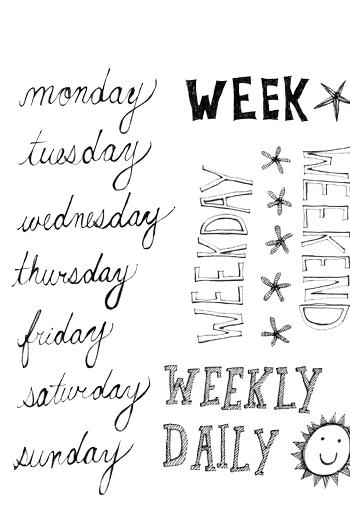Routines
Duration/age

Children often love to help around the home. Establishing regular routines and ways for completing tasks helps them to be involved in the everyday activities you do as a family.
You might be surprised to discover just how much your child will enjoy taking part in your family's everyday routines.
Get together as a family and brainstorm different types of routines. Some routines might be for things that you do every day and other routines might be weekly or just every now and then. Make a list of all the routines you have, group them into daily, weekly or sometimes. Look at the daily routines with your child and talk about which ones they might like to take responsibility for, such as brushing their teeth, getting ready for bed or getting dressed in the morning.
Once your child has chosen the routine that they want to be responsible for, explore together what it involves and when it will happen. Depending on how old your child is, they may be able to complete the task on their own or they might need some support. If they do need support you could create a visual schedule of the activity using photos that you have taken or you could make a storybook together about how to complete the task.
Materials you will need
- Paper
- Pen
Alternative tools
- Glue
- Camera
- iPhone
Skills this activity improves
Why does this matter?
When children are involved in the set-up and following of family routines they are learning to follow direction, listen to instructions and to predict what will happen next. As they do this they learn that a routine is regular, planned and that it will happen in the same order each time. Understanding how events are ordered helps children to transition from one activity or experience to the next.
By planning and following routines, children are experimenting with ordering, sorting and grouping using time and frequency.
What does this lead to?
As children explore their routines they are learning to make predictions about when things will occur, how often they will occur and the likelihood of them occurring. By sorting and grouping the routines they are learning about time and order. As you talk together about when routines occur children are experiencing time and exploring the different ways that we can represent time.
Time can be represented as a numeral on a clock, as an event that will happen or as something that happens at different times of the day. Time can be represented as something that happens very soon or is over quickly, as an event that lasts a long time or as something that we need to wait to happen.
When we talk about time as an event or a routine, children are developing an understanding that we will use different language to describe this rather than using a number to represent time.
Language to use
- Often, sometimes, always, never, tomorrow, every day
- Morning, evening, night-time, lunchtime, breakfast, dinner time, before school, after school
- Routine, event, ritual, occurrence, order
Questions to use
- When will this happen?
- How often does this happen?
- What will happen first?
- What order will we do it in?
- Do you need help?
- Why do we need to do this?
Useful tips
- Establishing regular routines for children with a disability will help them to understand change, transition to the next event and reduce stress. Explore with your child's specialist agencies how to establish helpful routines for your child.
- For routines and visual schedules to support toilet training visit the Raising Children Network website.
- Setting up routines for family celebrations or family time together is as important as daily chores. Children will begin to understand that routines can be fun and enjoyable and not only about work or completing tasks.
- Remember to talk to your child in your home language.
More ideas
- Create a reward chart for the family. Try and collect 10 stickers for completing the family chores. Once you have 10 stickers the whole family can have a reward.
- Create labels and pictures of where toys and clothing belong. Your child can help you put them in the right place.
Variation by age
Three to five year olds
- Create a calendar or chart that shows when each chore is done.
- Create storybooks about the chores that include photos of the family doing the chores.
Questions to ask
- Whose job is this?
- When do we do that?
- What do we need so we can do that job?


